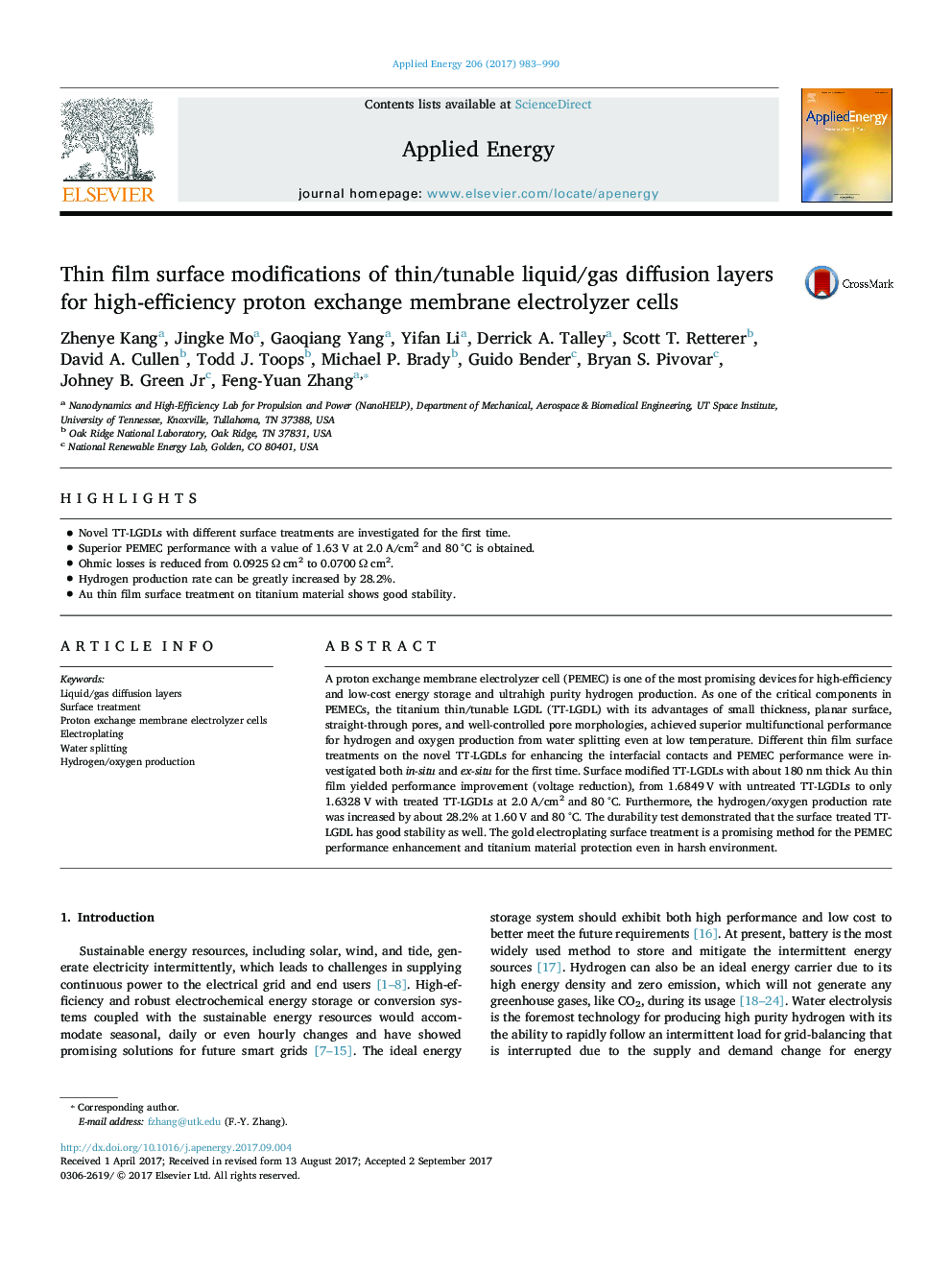| Article ID | Journal | Published Year | Pages | File Type |
|---|---|---|---|---|
| 4915735 | Applied Energy | 2017 | 8 Pages |
Abstract
A proton exchange membrane electrolyzer cell (PEMEC) is one of the most promising devices for high-efficiency and low-cost energy storage and ultrahigh purity hydrogen production. As one of the critical components in PEMECs, the titanium thin/tunable LGDL (TT-LGDL) with its advantages of small thickness, planar surface, straight-through pores, and well-controlled pore morphologies, achieved superior multifunctional performance for hydrogen and oxygen production from water splitting even at low temperature. Different thin film surface treatments on the novel TT-LGDLs for enhancing the interfacial contacts and PEMEC performance were investigated both in-situ and ex-situ for the first time. Surface modified TT-LGDLs with about 180 nm thick Au thin film yielded performance improvement (voltage reduction), from 1.6849 V with untreated TT-LGDLs to only 1.6328 V with treated TT-LGDLs at 2.0 A/cm2 and 80 °C. Furthermore, the hydrogen/oxygen production rate was increased by about 28.2% at 1.60 V and 80 °C. The durability test demonstrated that the surface treated TT-LGDL has good stability as well. The gold electroplating surface treatment is a promising method for the PEMEC performance enhancement and titanium material protection even in harsh environment.
Related Topics
Physical Sciences and Engineering
Energy
Energy Engineering and Power Technology
Authors
Zhenye Kang, Jingke Mo, Gaoqiang Yang, Yifan Li, Derrick A. Talley, Scott T. Retterer, David A. Cullen, Todd J. Toops, Michael P. Brady, Guido Bender, Bryan S. Pivovar, Johney B. Jr, Feng-Yuan Zhang,
